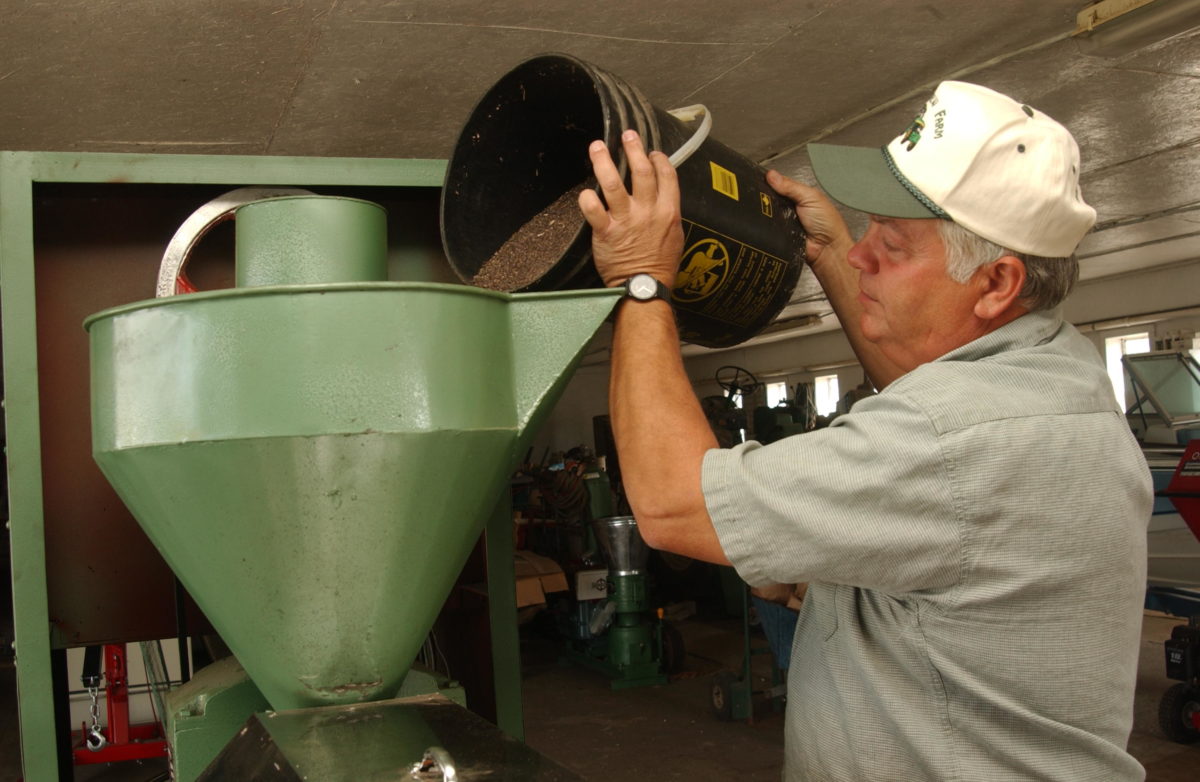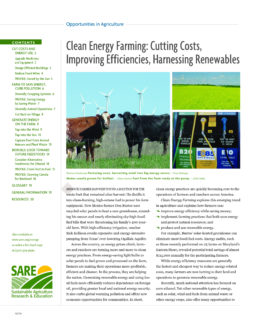Just steps from the Canadian border, Vermont dairy farmer Roger Rainville is one of many farmers looking to determine his own energy future. At his aptly named Borderview Farm, a 300-acre mix of row crops, pasture and dairy replacement heifers, Rainville is gearing up to become self-sufficient in energy, using biodiesel converted from his own canola crop. (See SARE’s video series on Roger Rainville).

Rainville, who has farmed outside of the small town of Alburgh since 1982, has long been interested in alternative energy. When Vermont Extension Specialist Heather Darby invited him to participate in a SARE-funded farmer research project evaluating canola varieties for biodiesel production, he was thrilled at the prospect.
“We had been dabbling for a while so we were pleased to jump in,” Rainville said. “It’s been frustrating to see big companies get millions and tell us we couldn’t [produce our own energy], when, in fact, farmers can do this themselves.”
Rainville was particularly excited about the multiple prospects from canola. “We could see growing our own canola oilseed, producing our own fuel and still having the byproduct for cattle feed,” he said. Given that there are approximately 10,000 cows within a 20-mile radius of his operation, and that canola meal can fetch up to $200 per ton, Rainville quickly grasped how the economics would work in his favor.
In 2005, the first year of the trial, Darby and Rainville planted more than 21 varieties of canola, selecting the top three for the following year. “We wanted varieties that were high yielders, high oil [producers], and [would be] available in years to come,” said Darby. The farmers also selected varieties that enabled them to save seed.
Rainville found it easy to grow the canola and fit it into his existing corn-alfalfa rotation, but harvesting the seed proved more of a challenge. In the gusty, cool plains of the Midwest, where canola is traditionally grown, the crop is mowed to shelter it from blustery winds. In Vermont, however, correct timing of the swathing proved difficult. Rainville found that waiting too late caused a high proportion of seed pods to shatter. The following year, an unusually wet August caused many of the seeds to rot. By the third year of the trials, however, Rainville realized that in Vermont, unlike the windy Dakotas, the canola could ripen and dry without swathing. In 2007, Rainville harvested the canola directly out of the field, achieving yields of 1.5 tons per acre, leaving him very optimistic about future production.
Because he anticipates excellent returns from the meal by-product, Rainville is not worried about time and labor costs for biodiesel processing. He recently purchased a press to begin converting the canola seed to oil. Next, he plans to set up a cooperative on his farm with other area oilseed farmers, who will use his facility to convert their own canola to biodiesel. Rainville predicts he can grow and process enough canola to produce 2,000 gallons per year of biodiesel, enough to free his farm from fossil fuels.
“Years ago, farmers used 10 percent of their land to fuel the farm — the feed went to the horses,” said Rainville. “This is the same idea,” he added, referring to the canola crop being used to “feed” the tractors.
“The whole concept of being [energy] self-sufficient on the farm is really pretty exciting,” Rainville said.
